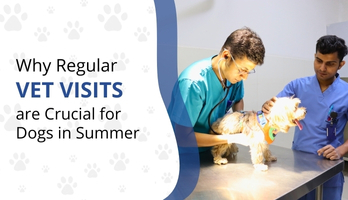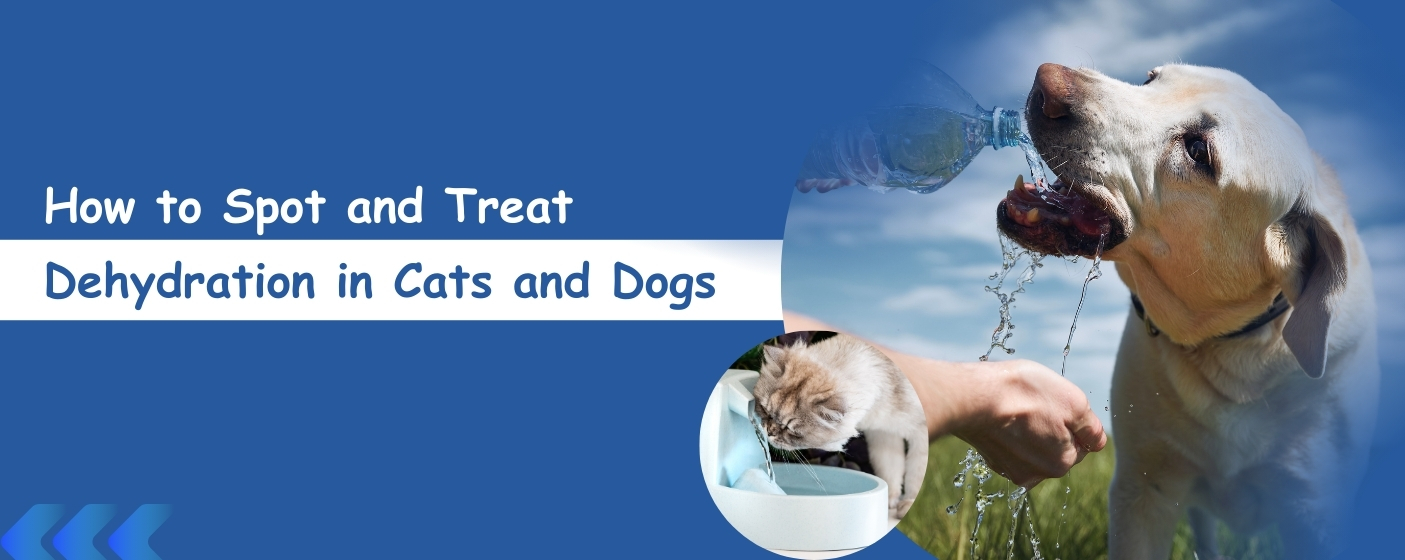Dehydration in pets, especially cats and dogs, is a serious condition that can develop quickly and have life-threatening consequences if not recognised and treated promptly. Since our furry friends can’t tell us when they are thirsty or feeling unwell, pet owners must know pet dehydration symptoms.
Recognising the signs
- Loss of skin elasticity: One of the most reliable pet dehydration symptoms is loss of skin elasticity. You can check this by gently pinching the skin at the back of your pet’s neck or between their shoulder blades. In a well-hydrated animal, the skin should spring back into place immediately. If it takes longer to return or stays tender, it’s a strong indication of dehydration.
- Dry gums: Your pet’s gums and mucous membranes feel dry or sticky to the touch, rather than moist and slippery as they should be.
- Dull eyes: Sunken, dull, or dry-looking eyes may develop as dehydration worsens, making your pet’s eyes appear less bright and more recessed in their sockets.
- Excessive panting: While panting is a normal way for dogs to cool down, excessive panting, especially if it’s more frequent than usual, can be considered one of the pet dehydration symptoms. In severe cases, you might notice fast, shallow breathing, or even collapse and shock, which are medical emergencies.
- Dry nose: A common pet dehydration symptom, a dry nose often accompanies dehydration and should be taken seriously, especially if it’s paired with other signs.
- Vomiting: Vomiting and diarrhoea are both symptoms and causes of dehydration, as they rapidly deplete the body’s fluids and can make the condition spiral out of control.
- Lethargic behaviour: A pet dehydration symptom to watch for, dehydrated cats and even dogs become less active than usual, showing little interest in playing or walking. They may seem weak, sluggish, or simply want to lie down and rest. Loss of appetite is another red flag, especially if your pet refuses even its favourite treat.
Why are cats more susceptible to dehydration
- Cats are small in size: As cats are so small, they can get dehydrated really quickly. They just don’t have a lot of extra water in their bodies, so even losing a little bit of fluid can become a big problem fast.
- High metabolic rate: Smaller animals have a higher metabolic rate, which means they lose water more quickly through normal processes like respiration and urination. Plus, cats don’t always feel thirsty; dehydration can sneak up on them and get worse much faster than you might expect.
- Thirst mechanism: Cats evolved in the desert; they are used to getting most of their water from their food instead of drinking it directly. That’s why, if they start to get dehydrated, they might not drink more water to make up for it.
- Drinking style: Cats have a precise, rapid flicking of the tongue drinking style. They take small, controlled sips, which are not enough for good hydration.
Since dehydration can escalate into a serious concern, it becomes even more important to take quick action and take your pet to CGS Hospital in Gurugram and Delhi. Our experienced team provides comprehensive veterinary and emergency care, ensuring pets and community animals receive prompt, compassionate treatment around the clock, especially when urgent medical attention is needed. So without further delay, please call our experts on +91-931-101-4490/95 or +91-931-101-4420/25 today!




